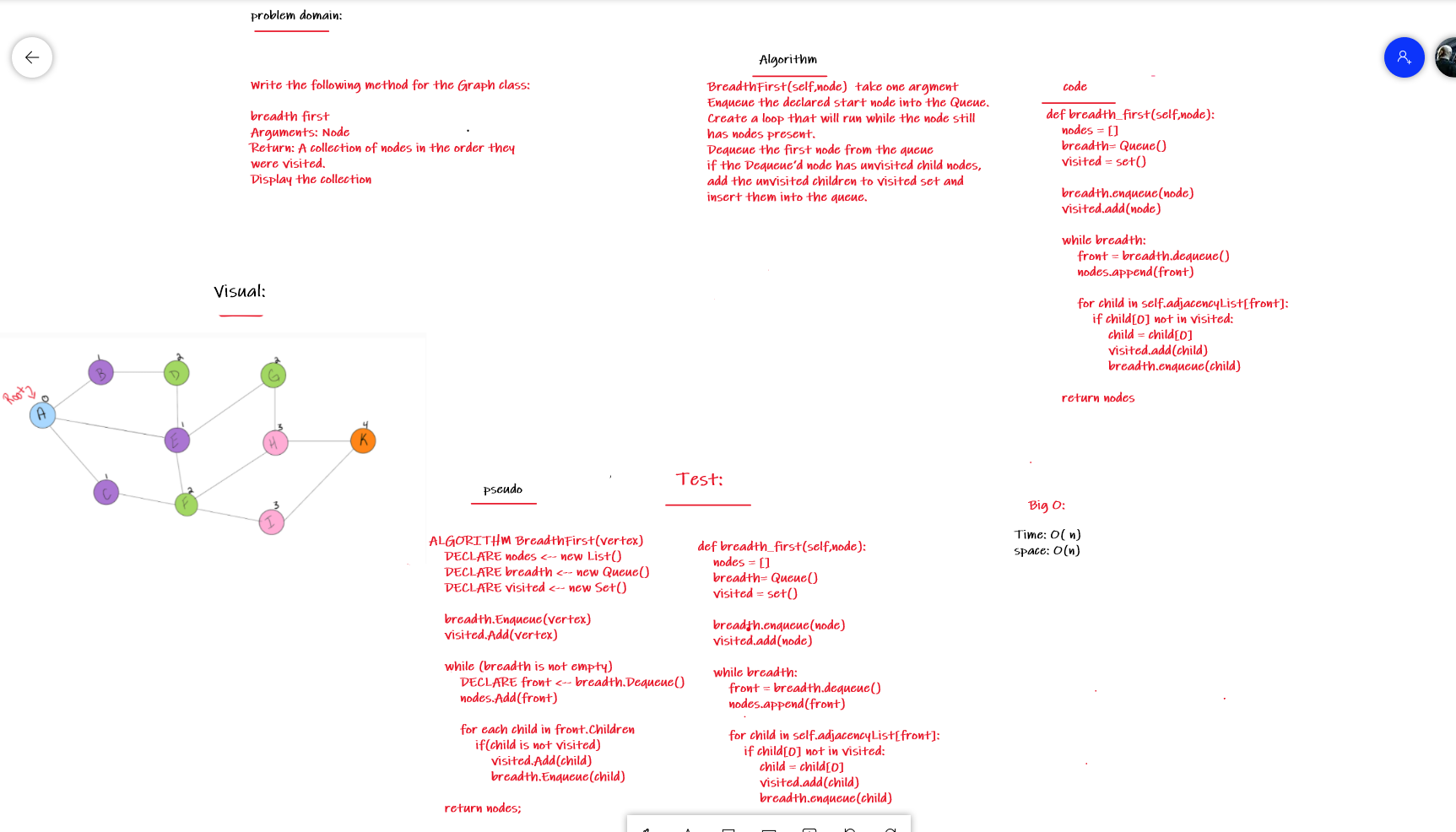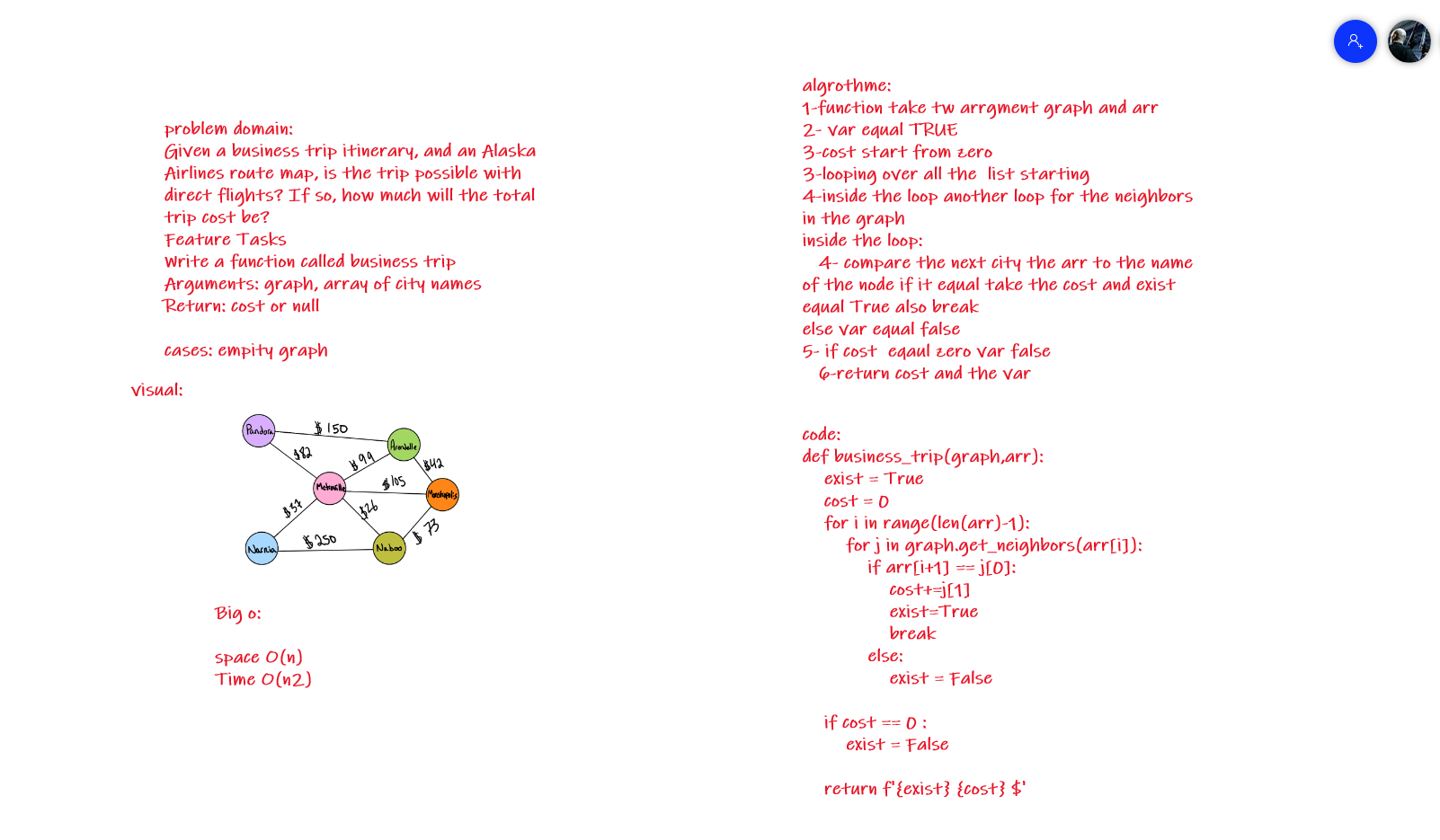Graphs
A graph is a non-linear data structure that can be looked at as a collection of vertices (or nodes) potentially connected by line segments named edges.
Here is some common terminology used when working with Graphs:
Vertex - A vertex, also called a “node”, is a data object that can have zero or more adjacent vertices. Edge - An edge is a connection between two nodes. Neighbor - The neighbors of a node are its adjacent nodes, i.e., are connected via an edge. Degree - The degree of a vertex is the number of edges connected to that vertex.
Challenge
Branch Name: graph
Challenge Type: New Implementation
Features Implement your own Graph. The graph should be represented as an adjacency list, and should include the following methods:
add node Arguments: value Returns: The added node Add a node to the graph add edge Arguments: 2 nodes to be connected by the edge, weight (optional) Returns: nothing Adds a new edge between two nodes in the graph If specified, assign a weight to the edge Both nodes should already be in the Graph get nodes Arguments: none Returns all of the nodes in the graph as a collection (set, list, or similar) get neighbors Arguments: node Returns a collection of edges connected to the given node Include the weight of the connection in the returned collection size Arguments: none Returns the total number of nodes in the graph
breadth first Arguments: Node Return: A collection of nodes in the order they were visited. Display the collection
function called business trip Arguments: graph, array of city names Return: cost or null
white board:
breadth-first:

graph-business-trip:

Code link:
Approach & Efficiency
all O(n) only add node and the size O(1) also graph-business-trip is o(n^2)
API
add node Arguments: value Returns: The added node Add a node to the graph add edge Arguments: 2 nodes to be connected by the edge, weight (optional) Returns: nothing Adds a new edge between two nodes in the graph If specified, assign a weight to the edge Both nodes should already be in the Graph get nodes Arguments: none Returns all of the nodes in the graph as a collection (set, list, or similar) get neighbors Arguments: node Returns a collection of edges connected to the given node Include the weight of the connection in the returned collection size Arguments: none Returns the total number of nodes in the graph
breadth first Arguments: Node Return: A collection of nodes in the order they were visited. Display the collection
function called business trip Arguments: graph, array of city names Return: cost or null